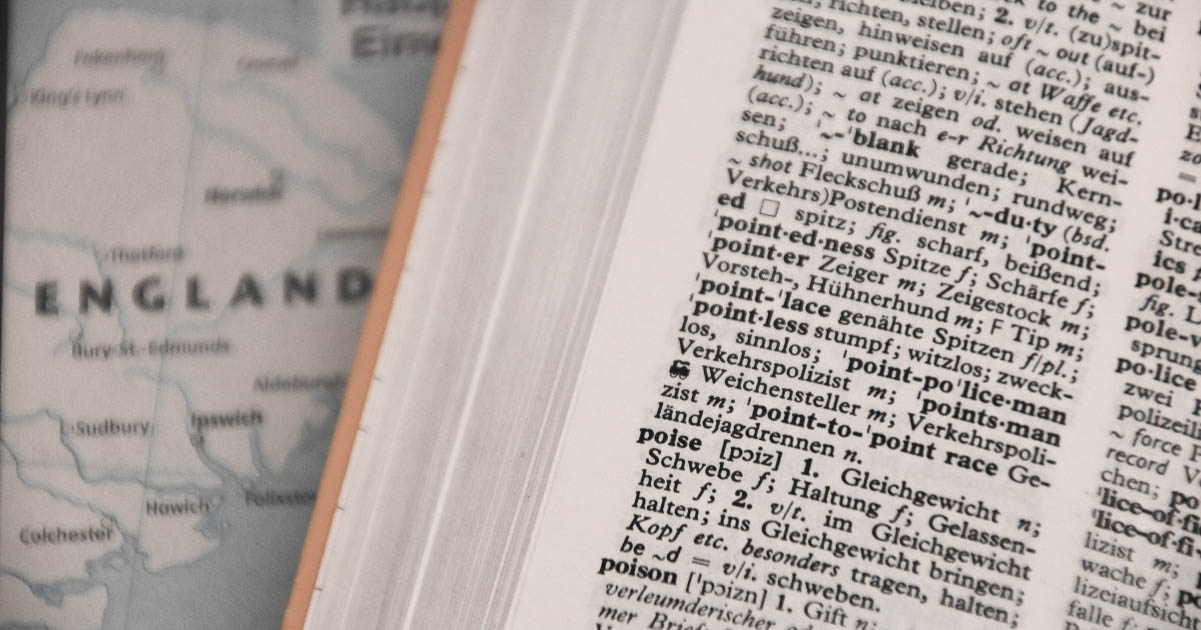
5 Tips for Proofreading Different English Dialects
One benefit of freelance proofreading is that you can work with clients all around the world. But this may mean you encounter English dialects that differ from the one you know best. And while this can pose challenges for proofreaders, we have a few tips that can help:
- Set the language preferences in your word processor to match the dialect of the document.
- Check dictionaries, style guides, and online resources for advice.
- Make sure to check punctuation as well as spelling and vocabulary.
- Start out with formal documents, which tend to vary less between dialects.
- Take a course that covers proofreading in different dialects.
Read on to find out more about how to proofread effectively in different English dialects.
1. Change the Language Preferences in Your Word Processor
As a proofreader, you should check the proofing language in your word processor every time you start working. This is especially important when you’re proofreading a document in a dialect other than your own. In Microsoft Word, you can set the proofing language by:
- Going to Review on the main ribbon.
- Selecting Language > Set Proofing Language.
- Picking the relevant English dialect from the list in the menu.
- Clicking OK to set the proofing language in the document.
Microsoft Word will then use the selected dialect when you run a spellcheck. This won’t spot every error, so don’t rely on it too much. But it will help you spot errors you might have missed otherwise (or even spellings from the wrong dialect you’ve introduced while editing).
2. Use Dictionaries, Style Guides and Other Resources
There are plenty of resources available that proofreaders can use to learn about or check details of different English dialects. Some of the most important include:
- Regional dictionaries and dictionaries that list regional spellings.
- Regional style guides (as well as your client’s style sheet if they have one).
- Websites that discuss English dialect differences (make sure to search for the dialect as well as the issue, such as “colour or color Canadian English” instead of simply “colour or color”).
- Google Ngrams, which lets you compare usage of words and spellings in different dialects.
- Forums and online groups where you can ask questions (although make sure responses come with a source, as user-submitted advice is not always reliable).
In addition, it helps if you have international friends! For instance, if you’re British but have a Canadian friend or colleague, you can ask them for advice on Canadian English. It’s worth double checking this online if they’re not an expert, but asking a native is a great first step!
3. Don’t Forget Punctuation
Spelling and vocabulary differences will usually stand out, but it’s easy to overlook regional differences in punctuation. British and American punctuation, for instance, differ on whether to use ‘single’ (UK) or “double” (US) quote marks and how to punctuate abbreviations.
There is room for variation (e.g., American English tends to favor em dashes over en dashes for asides in text, but this is a matter of preference in most cases). But it is always worth checking the dominant punctuation style for the dialect of the document you’re proofreading.
4. Hone Your Skills on Formal Writing
If you are new to a dialect, it’s usually best to start with formal writing (e.g., essays, business reports). Why? Simply put, formal English tends to vary less between different dialects.
There will still be variations in spelling, punctuation, and vocabulary. But formal documents typically use standard English, which means less slang and cultural references.
In less formal or creative writing, by comparison, it helps to know the dialect a bit better. For example, you could encounter dialogue or narration that uses regional jargon, such as:
“What’s the John Dory?” Amelia asked excitedly.
An editor new to the Australian dialect might find this confusing. They might even try to “correct” it. But this is just Australian slang for “what’s the gossip?” and doesn’t need correcting.
5. Learn More About Proofreading in Different Dialects
Taking a course that covers regional differences between English dialects will help you proofread with confidence. Our course covers spelling, grammar, and punctuation in British, American, and Australian English, setting you up for working in all three dialects.
If you want to find out more, try our free trial course today and start learning.





Your email address will not be published.